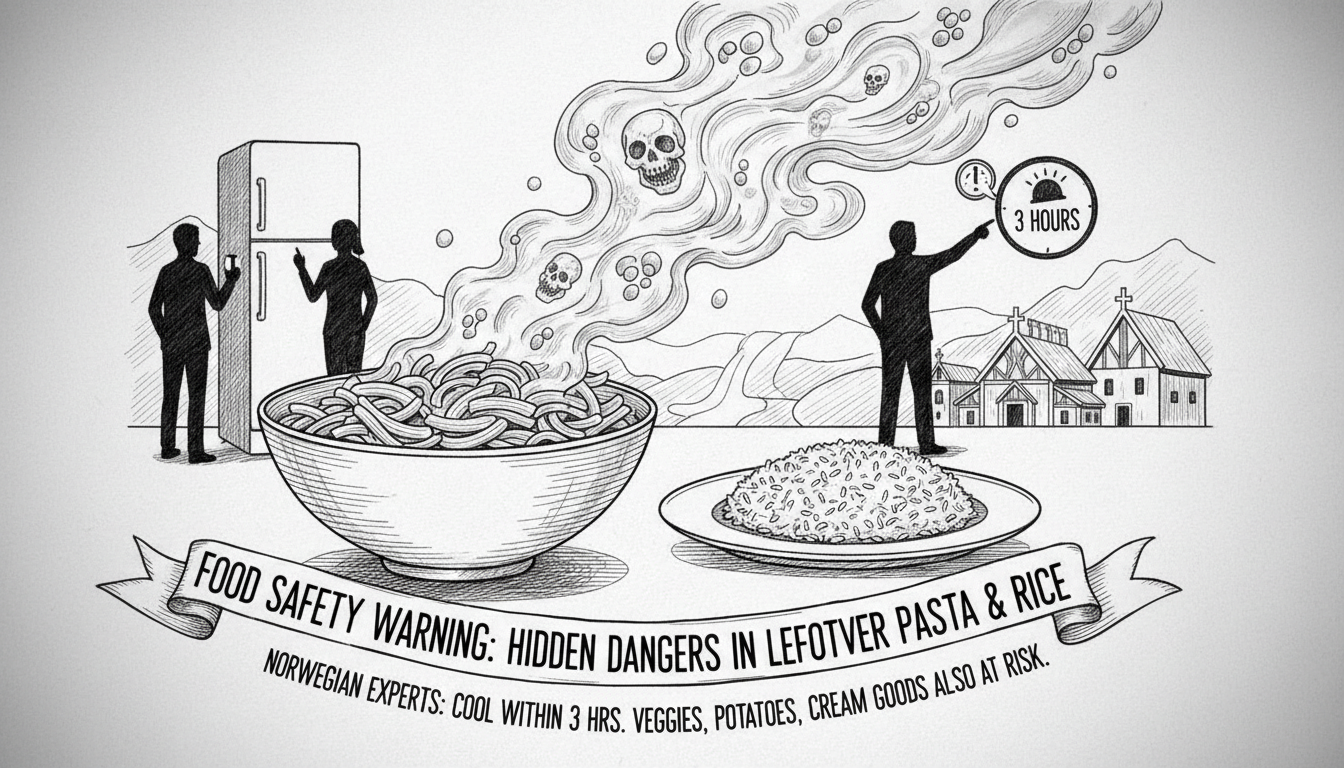Norwegian food safety authorities issue a strong warning about common kitchen practices that could make families seriously ill. The danger lies in how people handle leftover cooked pasta, rice, and other prepared foods.
Bacillus cereus, a soil bacterium that forms highly resistant spores, represents one of the most durable life forms known to science. These spores survive boiling temperatures and can reactivate when cooked food cools on kitchen counters.
Lindis Folkvord, section chief for biological food safety, explains the risks. This bacterium differs from most others because it survives cooking and causes known food poisoning cases, she said in a statement.
Professor Marina Elisabeth Aspholm, food safety research group leader at the Norwegian University of Life Sciences, provides crucial details. The problem occurs when cooked pasta or rice sits at room temperature cooling on kitchen counters, she explains. Then the spores can reactivate, begin growing, and in some cases produce toxins that cause acute vomiting.
This process happens quickly depending on temperature, food type, and initial spore concentration. Bacillus cereus thrives particularly well at kitchen counter temperatures. For this reason, experts recommend that cooked rice and pasta should not remain at room temperature for more than three hours total. This includes all time the food spends out of refrigeration during cooling, standing on counters, or sitting on buffet tables.
Large pots of rice or pasta take much longer to cool than small portions. They can stay warm for several hours, creating ideal conditions for rapid bacterial growth in that temperature range.
The bacterium produces a heat-stable toxin that forms in food left too long at room temperature. Small amounts of cereulide toxin lead to acute vomiting, often within thirty minutes to a few hours after consumption. Larger doses can cause more serious effects including liver damage and, in rare cases, organ failure.
The same bacterium can cause illness through another mechanism. When Bacillus cereus travels into the intestines and grows there, it produces different toxins called enterotoxins. These act directly on intestinal walls by creating small pores in gut cells. Fluid leakage through these pores leads to watery diarrhea.
Professor Aspholm warns that the risk extends beyond just pasta and rice. Vegetables, potatoes, and many other nutritious foods can contain the same bacteria and require identical handling for safety, she states.
Baked goods with vanilla cream represent another unexpected danger zone. Vanilla cream provides both nutrients and high water content. The combination of milk, eggs, starch, and sugar creates excellent growth conditions when pastries remain at room temperature too long. Such cakes often sit out for many hours on kitchen counters, in cafeterias, or on dessert tables, making them particularly vulnerable.
Large portions of warm dishes like soups and stews also pose risks. Bacterial spores can withstand hours of boiling, and when dishes cool slowly, these spores can reactivate and multiply. The warm, moist, nutrient-rich food creates ideal conditions for bacteria and sometimes toxin formation.
For safe next-day enjoyment of reheated meals, experts emphasize that refrigerators must maintain 4 degrees Celsius or lower. At this temperature, Bacillus cereus cannot thrive. Cooked rice, pasta, and many other foods can safely remain refrigerated for three to four days. However, mold and some cold-tolerant bacteria may still grow slowly even in refrigeration, and texture, taste, and smell can change after several days.
Professor Aspholm recommends consuming all previously reheated food within three to five days. Using airtight containers proves very important for preventing dehydration, protecting against flavor transfer from other items, and reducing contamination risk.
The practical solution involves distributing food into smaller portions or flat containers during cooling. This approach lowers temperature quickly and significantly reduces bacterial growth risk.
This warning comes as food safety awareness increases across Nordic countries, where traditional cooking methods sometimes conflict with modern scientific understanding. Many families routinely prepare large batches of traditional dishes that require careful handling to prevent foodborne illness.
Norwegian food storage guidelines align with European standards but face unique challenges in household implementation. The convenience of preparing meals in advance must balance with proper cooling and storage practices to protect family health.

